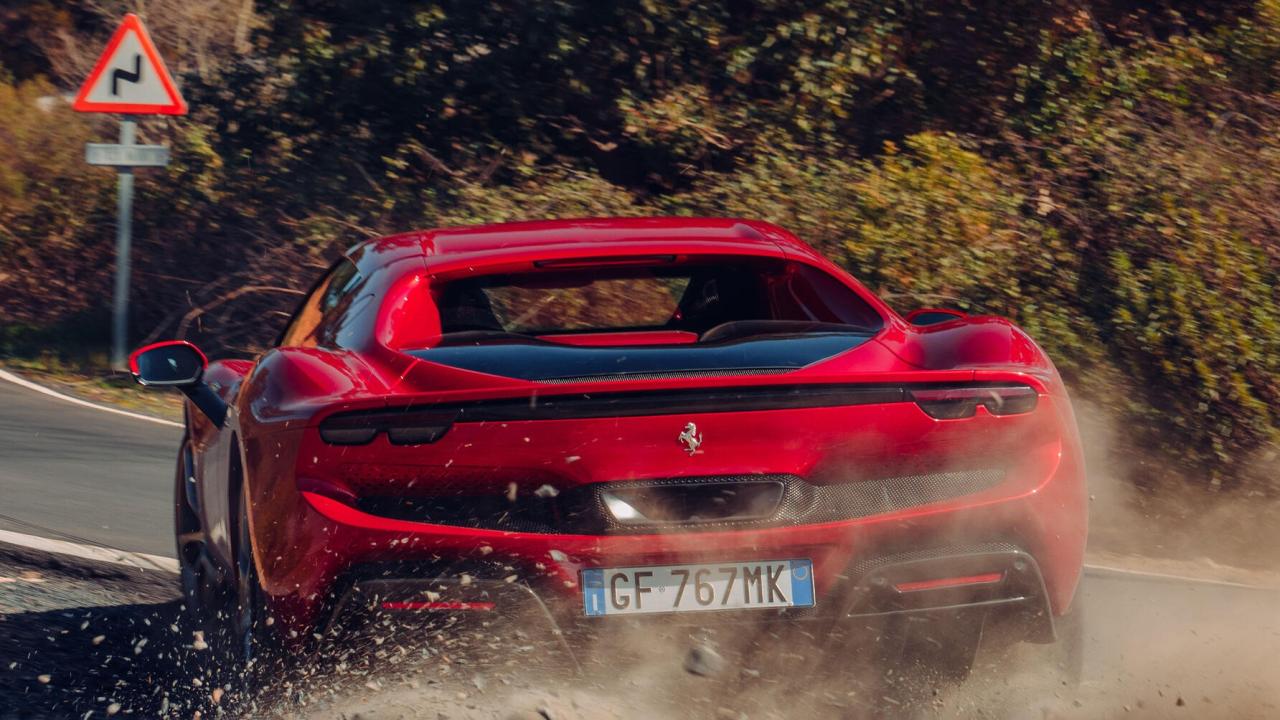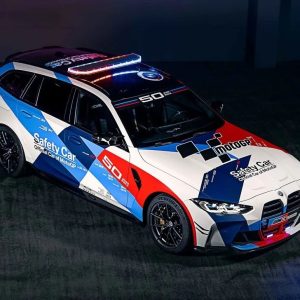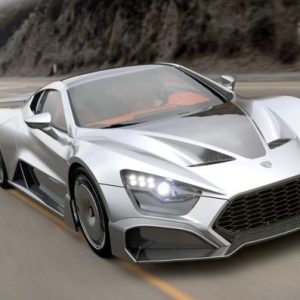
The bends never end. Mile after mile of golden third gear curves, diamond-like chippings in the road twinkling in the sun, dappled shade rushing by, surface scrubbed and polished, tarmac twisting onwards, writhing back and forth, up and down, views bubbling at the fringes. Numbing in its monotony, if you couldn’t appreciate the perfection of it.
I have to self-administer mental slaps to stop myself thinking I’m in a dream sequence with a chorus of angels on accompaniment. The car’s not helping. The rhythm of this road is one the Ferrari 296 GTB slips into effortlessly. It compresses in, then springs out, a movement that comes as naturally to it as breathing to us. In and out, in and out. Just doing what it does. Just sweeping along.
Ferrari 296 GTB
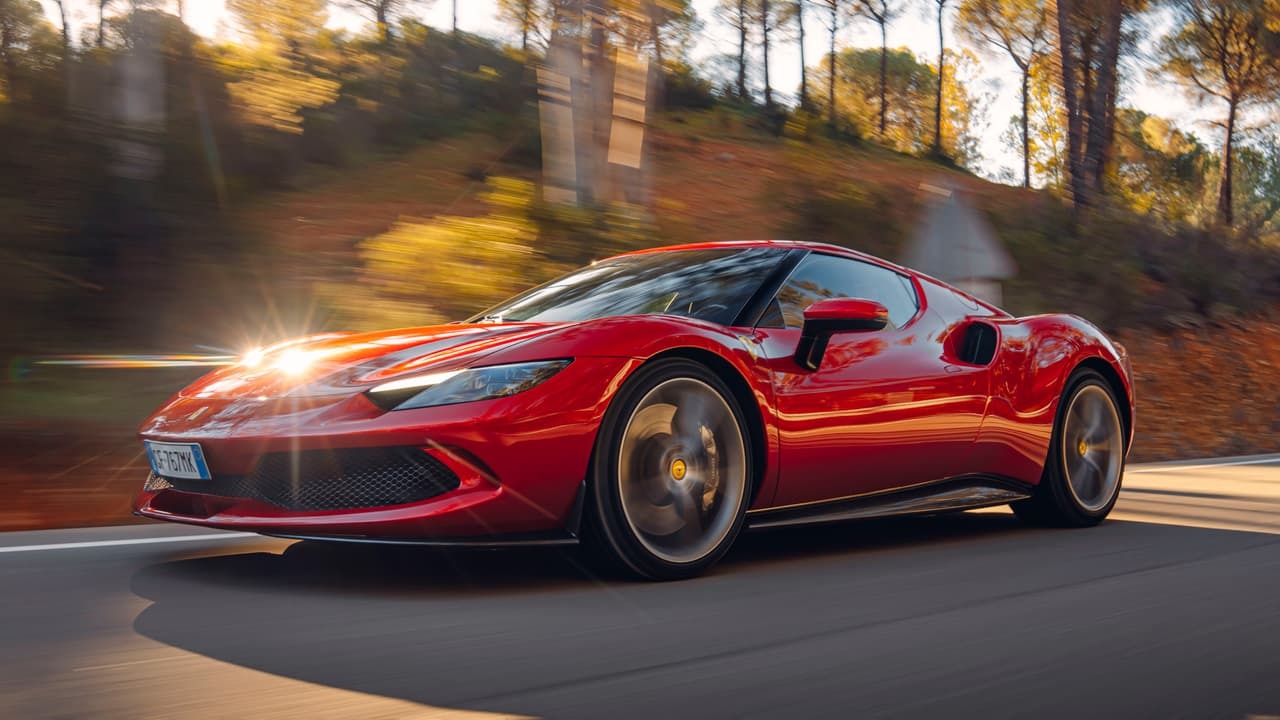
It takes Mark and Charlie in the hired ‘chase’ car 10 minutes to catch up. They’re green, the Seat Arona’s brakes are smoking. I hadn’t been going intentionally quickly, but every so often, when third became fourth became fifth, I was aware. Mental slap time.
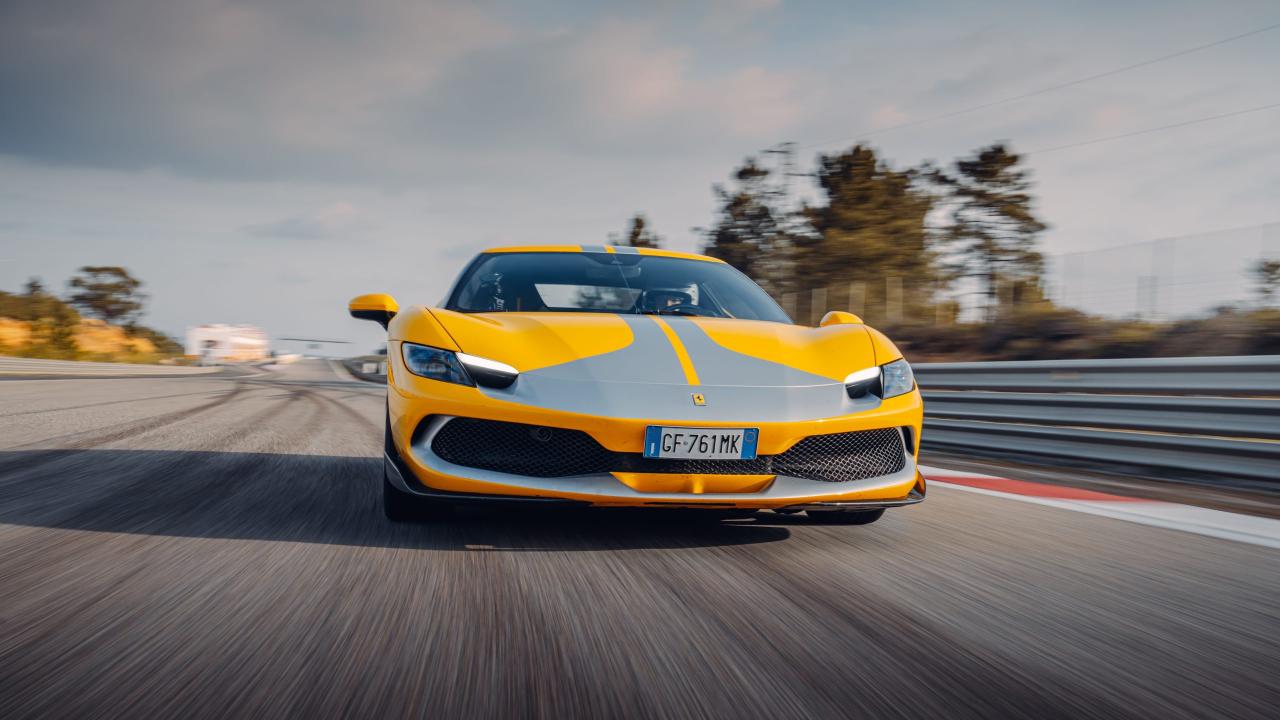


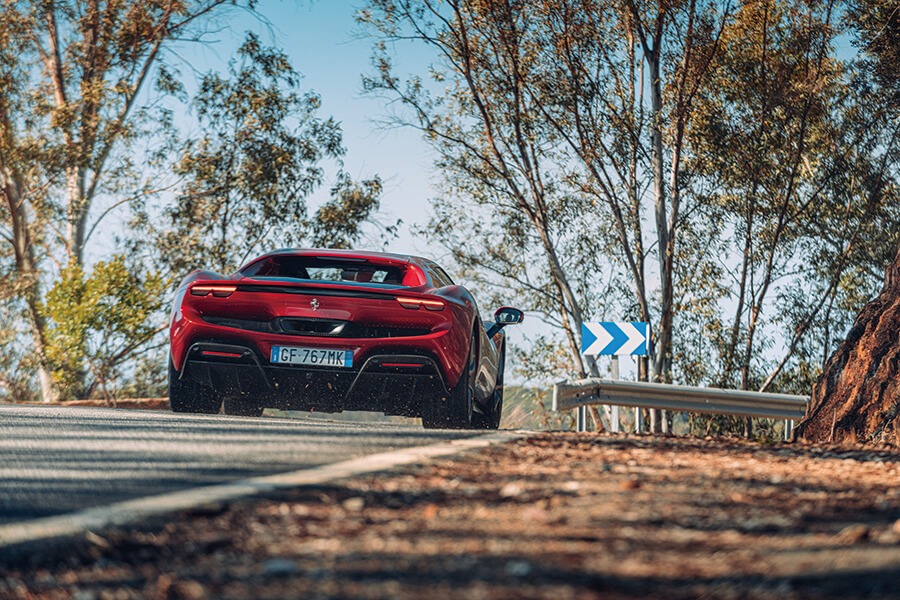
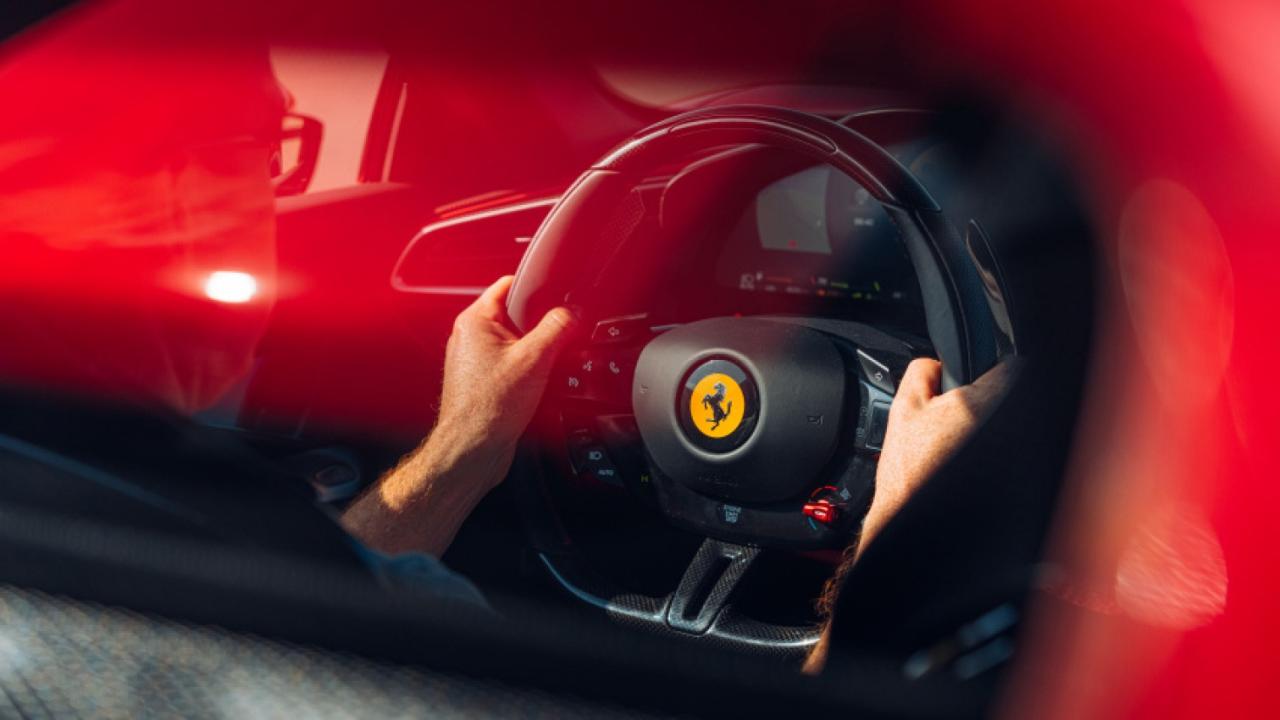
Encapsulated in those miles, though, is the genius of the 296 GTB. This is a deeply, furiously complex car. It never feels like that to drive. Neither on road, nor on track. But there’s also another contradiction at the heart of Ferrari’s latest and – well, let’s share this now shall we – greatest* achievement. As the occupants of the hard-pressed Arona can attest, the 296 generates speed without effort. It’s by no means alone in that, but so often these days the engineering necessary to give cars that astonishing rapidity further distances the driver from the experience. Not here. Along with the simplicity comes tactility. (*only technically speaking. In a back catalogue that includes the 458 Speciale, F40, F50, 288 GTO and 812 Competizione, there’s no definitive.)
Ferrari 296 GTB
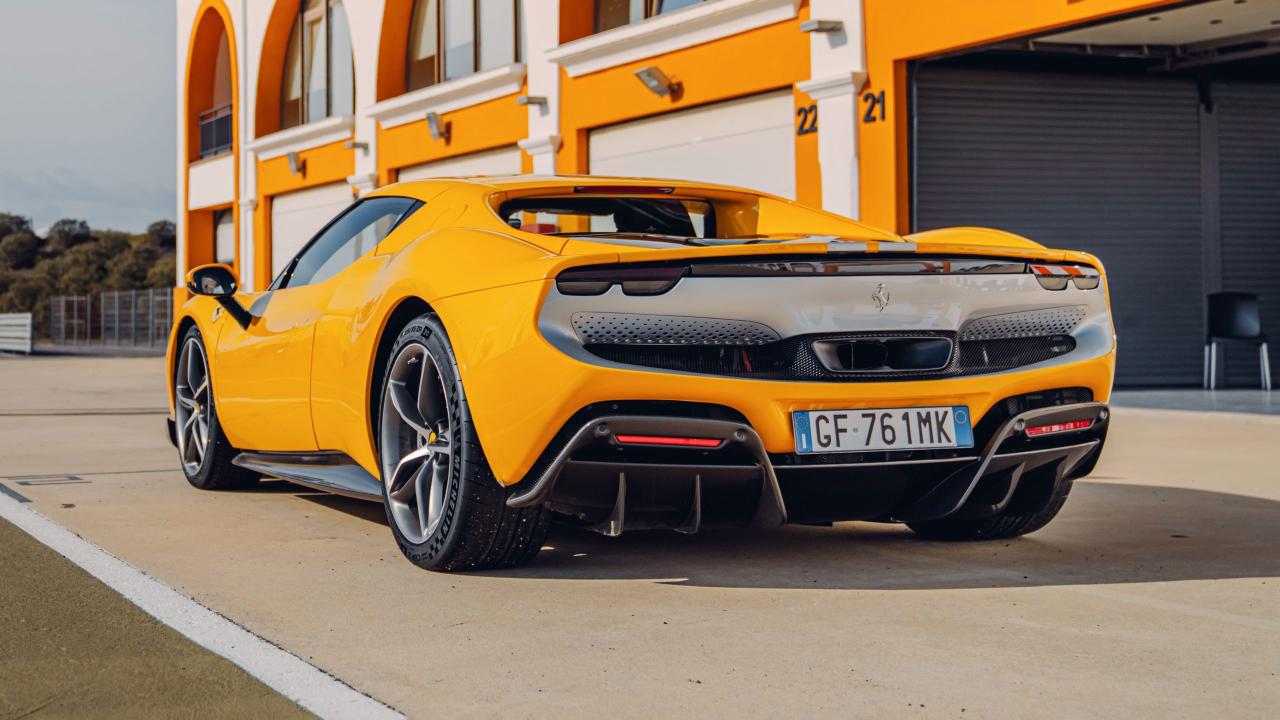
They’re mutually compatible of course, but rare bedfellows in an age where battery and motor mechanics are easily understood, but the electronics that power them are a complete mystery and the end result fails dismally to connect on a human level. Well, assuming you judge satisfaction to be more than smoothness and silence. The 296 GTB is a hybrid, the most challenging construction of all: exploding petrol in combination with pulsing electrons. Voluptuous power curve meets torque from zero. Incompatible on every level.
2022 Ferrari 296 GTB Assetto Fiorano Review – Automotive Daily
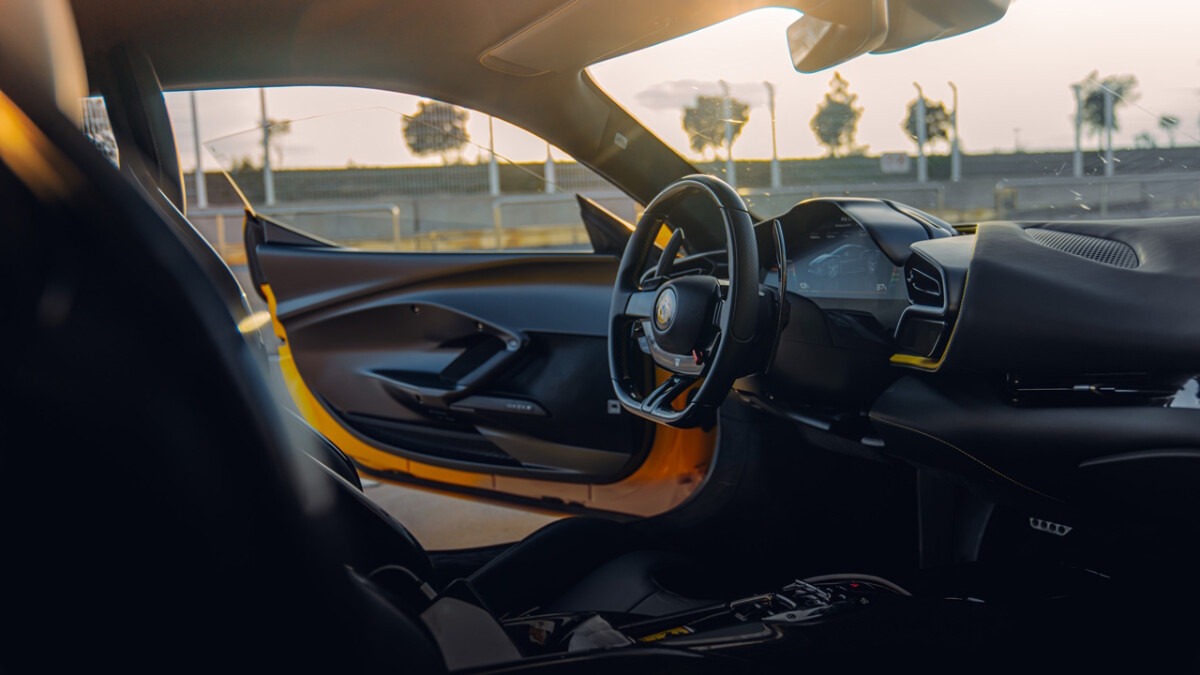
Ferrari has further chosen to make a rod for its own back by removing cylinders. It’s a bit of a revolution: Ferrari’s first ever production V6. Another asterisk: the Dino was a sub-brand, remember. Look deep and you’ll spot the famous red crackle covers, but pride of place in the engine bay now goes to a curvaceous burnished metal heat plate. Under it, nestling in the ‘hot vee’ of the opened out 120° cylinder banks, lie a pair of IHI turbos shared with the SF90. The turbines at both ends are slightly smaller, so they can spin faster (180,000rpm), run more efficiently (by 24 per cent) and respond quicker.
Flat out in the astonishing new Ferrari 296 GTB | Top Gear
Behind the engine, before you get to the eight-speed twin-clutch gearbox, there’s a disc about the dimension of a frying pan. That’s the electric motor. Massively power dense, it produces 165bhp. Only one, where the SF90 has an extra two, each responsible for a front wheel. The 296 is rear-drive only. Which means this – I’m tempted to say entry level – mid-engined Ferrari has 819bhp. A mere eight years ago the holy trinity of hybrid hypercars didn’t have that much more.
Ultimate Evolution: Ferrari 296 GTB
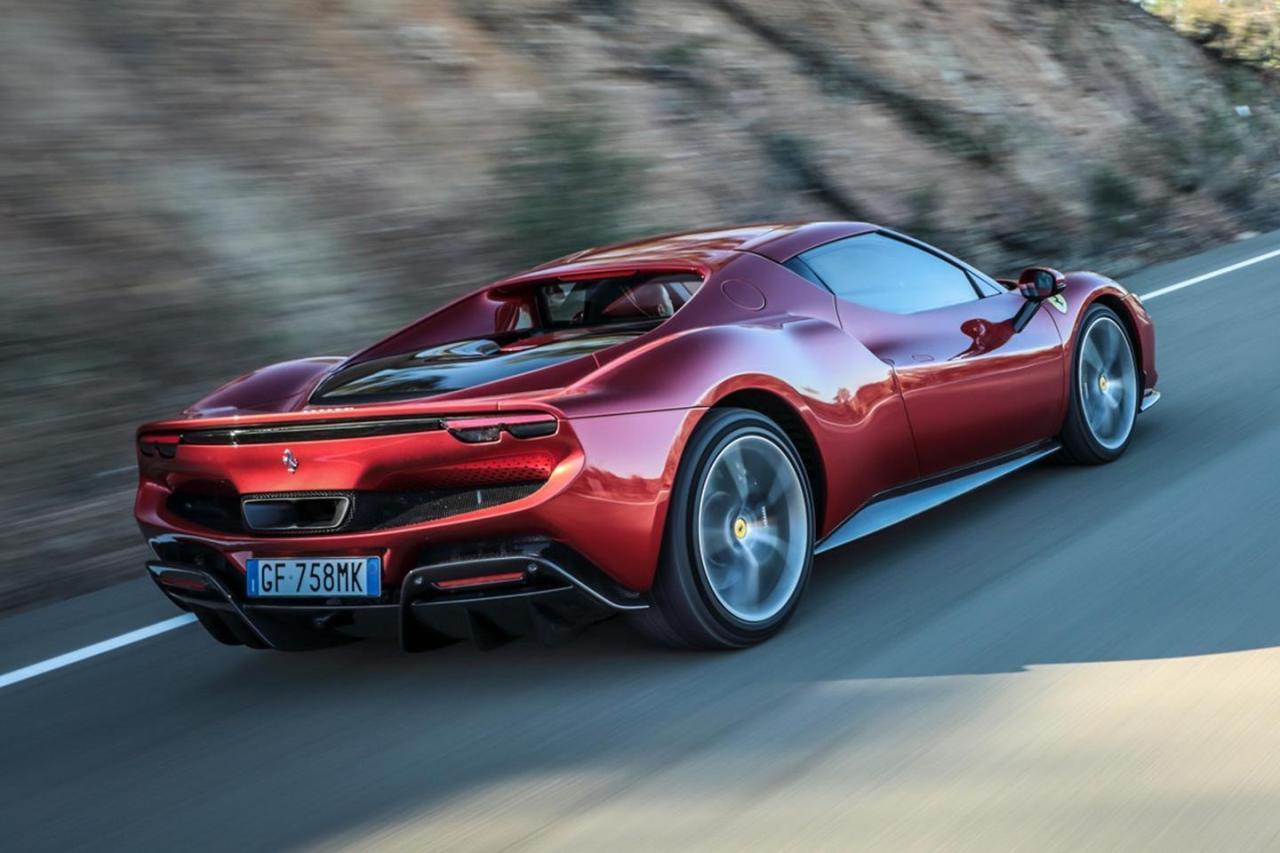
And none of them dispersed it as immaculately as this. Especially not the P1. Proper wild ride, that one. In the hills north of Seville this morning, in those moments when I went full Winnie the Pooh and greedily stuck my paw in the honey jar of power, honey was what I got.
And a sound that, if you wanted to carry an already contorted analogy one step too far, you could liken to the buzzing of bees. Relax, it’s better than that. Sound you’ll love having poured in your ears, higher pitched and richer toned than the F8 Tributo’s flat V8 blare, more fizzy and energetic. Ferrari claims its engineers nicknamed it the piccolo V12 – little V12 – it doesn’t have the trumpeting baroque glory, proud Roman pomp of an 812 in majestic full flow, but I can see where they’re coming from.
What it doesn’t feel – thankfully and amazingly – is particularly turbocharged. The F8’s V8 does, coming across as a mighty force generator, more impressive in the mid-range than the top end. Not this one. It soars to 8,500rpm, and gives you a reason to go there, max torque only arriving at 6,250rpm. Nor does it come across as particularly electrified. The turbos and e-motor are there to enhance the V6, not to be the stars of the show in their own right. Of course there’s masses of zero lag bottom end grunt, but the way it’s blended is genius. You can deceive yourself into thinking you’re driving an especially healthy naturally aspirated engine.
Ferrari has achieved this before, with the LaFerrari, but only by ensuring electricity was a token gesture, a AAA thrown into the V12 bonfire. But here you can let electricity play more of a role. On the lower left flank of the steering wheel boss are the haptic powertrain controls. Press eD and you have 15 miles of e-range from the 7.4kWh battery down behind the seats. OK, it’s more like 10, but the point stands. Every village I come to I go into stealth mode and roll silently through. Supercars are attention seekers, heard before they’re seen, but here’s that extra dimension electricity brings – soundless progress and a more accepting audience. The residents of Berrocal probably heard me five minutes ago and many miles away because, boy, was the H9026 a cracking little fidget of a road.
